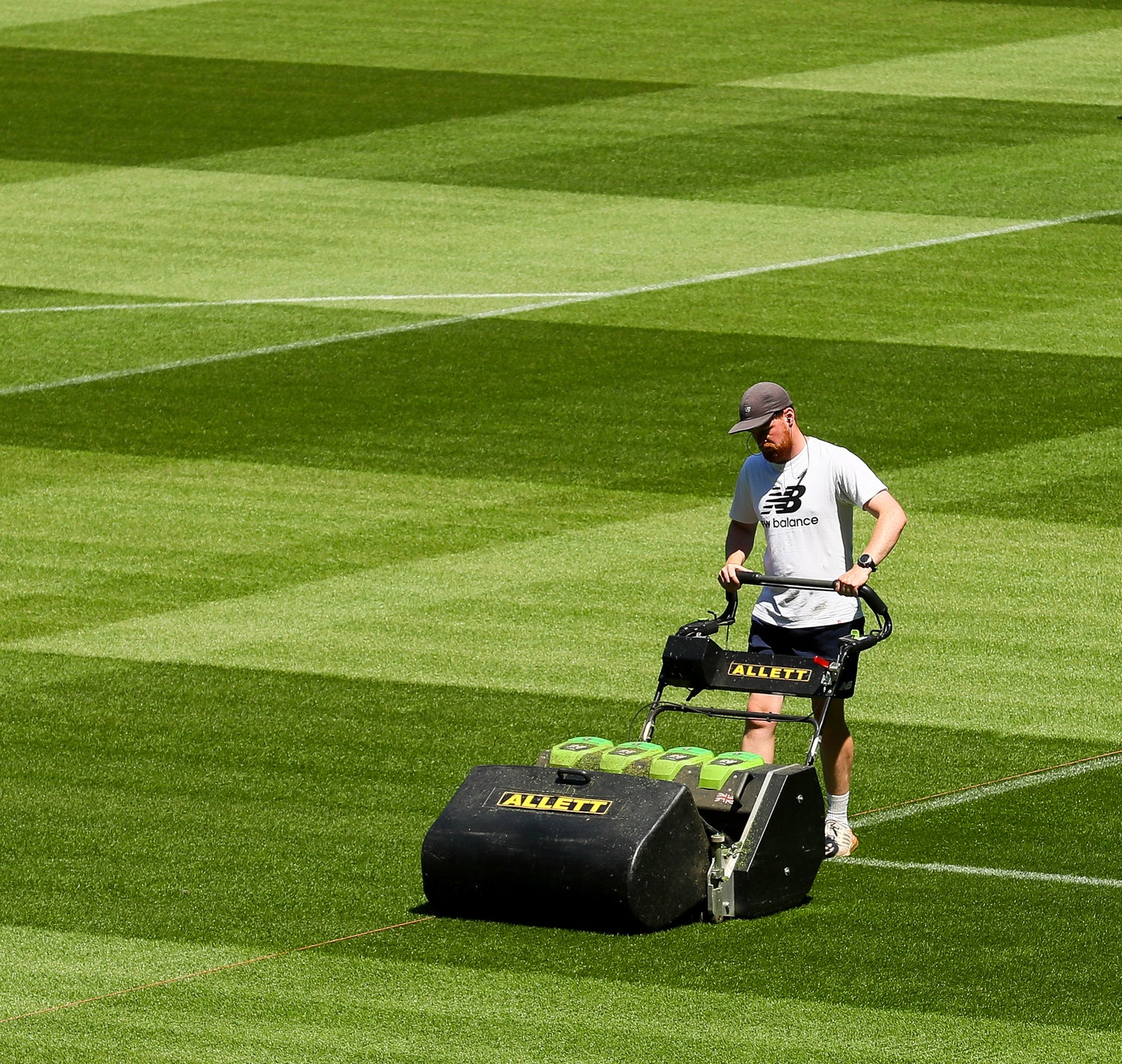In the dynamic world of sports, innovation is the key to enhancing player performance and ensuring a thrilling experience for fans. Today's game is fast and furious and exhilarating to watch. One such ground-breaking development in football infrastructure is the advent of hybrid football pitches. Combining natural grass with cutting-edge synthetic technology these pitches are transforming the game and providing a range of benefits that extend beyond the boundaries of the field. A giant laser-guided sewing machine on tracks is used to weave the polyethylene yarn into the ground. The process is incredible to watch and the machine moves slowly across the pitch implanting the yarn in rows 18cm deep into the sub-surface with 2cm of the fibre poking out of the ground.
The fibres are usually placed at 2cm intervals but the machine's settings can be adjusted to provide wider gaps between yarns. The natural grass grows around the fibres, anchoring it. When a player goes into the ground with their boots, the fibres stop the root zone from becoming displaced and there's less chance of a player taking a divot out of the ground. The pitch recovers faster after a game as there's less damage.
Back in the 1960s and 70s, the winter rains turned English football pitches into mud baths. The world's best players would slide around, covered in mud and water taking divots out of the pitch. Those days are long gone in professional football at least and the pitches these days are immaculate with not a blade of grass missing.

Let's take a look at the advantages of hybrid pitches
The Hybrid Advantage:
-
Durability and Consistency: Hybrid pitches offer the best of both worlds by combining the resilience of synthetic turf with the natural feel of grass. This fusion results in a surface that is more durable and resistant to wear and tear ensuring a consistent playing experience throughout the season. Players can rely on a stable and predictable surface reducing the risk of injuries caused by uneven terrains. Clubs such as Cardiff City have a Hybrid pitch with 3% artificial fibres.
-
All-Weather Playability: Traditional grass pitches often struggle to maintain their integrity during adverse weather conditions resulting in abandoned games. Hybrid pitches, on the other hand, are designed to withstand extreme weather. This ensures that matches can proceed as scheduled reducing the likelihood of cancellations or disruptions due to weather-related issues.
-
Increased Playing Hours: The durability and weather-resistant nature of hybrid pitches contribute to an increase in playing hours. With the ability to withstand heavy usage these pitches can host more training sessions, youth matches, and even multiple events in a single day. This not only benefits professional teams but also supports grassroots football by providing more opportunities for players of all levels to engage with the sport.
-
Enhanced Performance: The uniform surface of hybrid pitches allows for a smoother ball roll and consistent bounce, enabling players to showcase their skills without the unpredictability of traditional pitches. This not only benefits the players but also adds to the excitement for spectators as they witness a more fluid and fast-paced game.
The average hybrid pitch will last around 8-10 years





Leave a comment
This site is protected by hCaptcha and the hCaptcha Privacy Policy and Terms of Service apply.